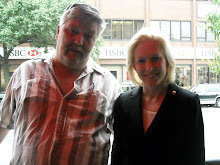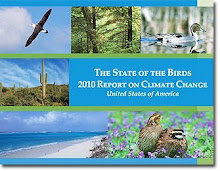 Within just a decade, Jamaica Bay could dramatically shift from an important natural habitat into a cesspool, preservationists charged with protecting the water body recently warned.
Within just a decade, Jamaica Bay could dramatically shift from an important natural habitat into a cesspool, preservationists charged with protecting the water body recently warned.And the city will be largely responsible for which direction the bay’s health turns.
“Jamaica Bay could be transformed from an incredibly significant salt marsh landscape with hundreds of species of birds, and serving as a nursery for fish—into basically all open water, turning a putrid pea green in the summer,” said Brad Sewell, the co-chair of the Jamaica Bay Watershed Protection Plan Advisory Committee.
“It really will be that kind of time scale,” Sewell said. “We’re not talking about a century. This is only a matter of years.”
During the last decade, the state Department of Environmental Conservation calculated that marshes are lost at a rate of 44 acres per year. “Every indication is that that rate has increased,” Sewell said.
The committee recently submitted its final recommendations for the city Department of Environmental Protection (DEP)’s Jamaica Bay Watershed Protection Plan.
The committee’s major recommendations target the two biggest problem the bay faces: water pollution and habitat degradation.
The bay is the depository of the city’s treated wastewater—approximately 300 million gallons a day. That water has a high concentration of nitrogen, but the bay’s marshes can only remove some of it, resulting in poor water quality. Wastewater and overflow from sewage treatment plants contribute to harmful algae blooms that diminish the bay’s dissolved oxygen, a condition that can kill wildlife.
“We are targeting these huge discharges of nitrogen pollution [treated human waste] coming from our wastewater treatment plants” and emptying into the bay, Sewell said. “We’re asking for a significant reduction in that.”
“The advisory committee recognizes it’s a huge problem and the city should step up and do what the bay needs—and what its legally required to do,” he added.
The committee also recommends that the city, in the long term, look to reconstruct its infrastructure so that every time it rains, the over flow from the sewers don’t empty into the bay.
As far as the habitat, the city must stop auctioning off wetlands to “the highest bidder,” Sewell said. A habitat protection and restoration program must target the bay’s peripheral tidal wetlands and upland buffer areas—including their immediate protection from development, the committee urged.
At the current rate of loss, the marsh islands will completely vanish by 2024, according to the committee’s report. It is unclear why the marshes are in jeopardy, but some studies suggest the reduction of sediment washing up on the marshes and excessive sulfides in sediments due to water pollution could play a role, the committee has reported.
In all, there are five priority recommendations. The other three include improving stormwater management; an expansion of efforts to restore the bay’s interior salt marshes; and a comprehensive science program for the bay.
The DEP submitted a draft of the Jamaica Bay Watershed Protection Plan in March. Critics of the plan said it did not contain a proposed set of actions, but rather a set of proposed actions still under consideration. Local Law 71, enacted in 2005, compelled the DEP to develop a watershed protection plan for the bay, and to establish the committee to advise the DEP and the City Council.
A final plan is due in October 2007.
Sewell said he remains guardedly optimistic the city will do right by Jamaica Bay. “It’s not too late for them to make the right decisions. To date, we’re not optimistic about the big decisions being made in the right way…but we remain hopeful.”
The bay, a unit of the National Park Service, borders Brooklyn, Queens and Nassau County, and includes 26,645 acres consisting of open water, meadowland, marshes, dunes and forests.
More than 80 species of fish, as well as a host of endangered and threatened species. Each year, nearly 20 percent of North America’s bird species visit Jamaica Bay.



























